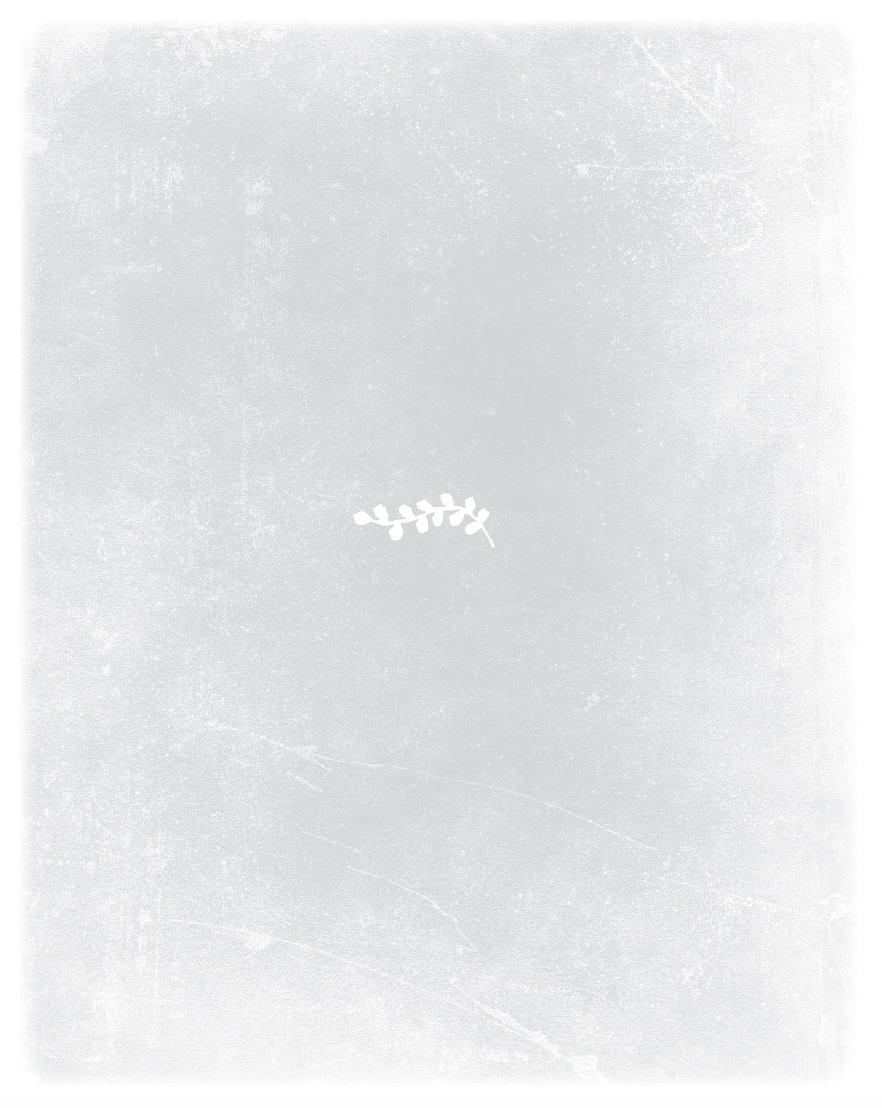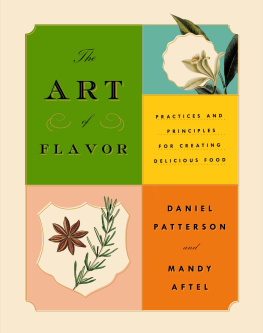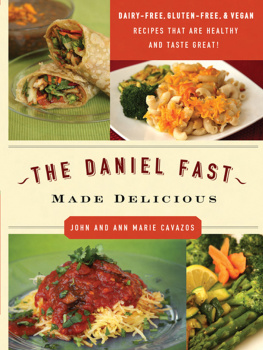A LSO BY D ANIEL P ATTERSON
Coi: Stories and Recipes
A LSO BY M AND Y A FTEL
Death of a Rolling Stone: The Brian Jones Story
When Talk Is Not Cheap (with Robin Tolmach Lakoff)
The Story of Your Life: Becoming the Author of Your Experience
Essence and Alchemy: A Natural History of Perfume
Scents and Sensibilities: Creating Solid Perfumes for Well-Being
Fragrant: The Secret Life of Scent
A LSO BY D ANIEL P ATTERSON AND M ANDY A FTEL
Aroma: The Magic of Essential Oils in Food and Fragrance

R IVERHEAD B OOKS
An imprint of Penguin Random House LLC
375 Hudson Street
New York, New York 10014

Copyright 2017 by Daniel Patterson and Mandy Aftel
Penguin supports copyright. Copyright fuels creativity, encourages diverse voices, promotes free speech, and creates a vibrant culture. Thank you for buying an authorized edition of this book and for complying with copyright laws by not reproducing, scanning, or distributing any part of it in any form without permission. You are supporting writers and allowing Penguin to continue to publish books for every reader.
Library of Congress Cataloging-in-Publication Data
Names: Patterson, Daniel, author. | Aftel, Mandy, author.
Title: The art of flavor : practices and principles for creating delicious food / Daniel Patterson and Mandy Aftel.
Description: New York : Riverhead Books, [2017] | Includes bibliographical references.
Identifiers: LCCN 2017006190 (print) | LCCN 2017016707 (ebook) | ISBN 9781594634307 (print) | ISBN 9780698197169 (ebook)
Subjects: LCSH: Cooking. | Flavor. | LCGFT: Cookbooks.
Classification: LCC TX714 (ebook) | LCC TX714.P388 2017 (print) | DDC 641.5dc23
LC record available at https://lccn.loc.gov/2017006190
p. cm.
The recipes contained in this book are to be followed exactly as written. The publisher is not responsible for your specific health or allergy needs that may require medical supervision. The publisher is not responsible for any adverse reactions to the recipes contained in this book.
Version_1
For my family D.P.
For Becky M.A.
Contents

Introduction
Smell and taste form a single sense, of which the mouth is the laboratory and the nose is the chimney.
BRILLAT-SAVARIN

W e met, you might say, at the intersection of scent and taste: a self-taught artisanal perfumer who had been a trailblazer in her work with natural essences, and a self-taught chef known for his creative approach to flavor.
We were introduced by mutual friends in the food business. Mandy came to Elisabeth Daniel, Daniels first restaurant in San Francisco, bringing her traveling organ, a fitted case filled with essential oils, which are the concentrated essences of botanical materials, historically used for both flavor and fragrance. We spent the morning smelling them, comparing notes and perspectives. The experience was revelatory. Encountered free of their physical form, the aromas of familiar plants seemed completely new. The essence of fresh ginger was citrusy and piercing. Tarragon revealed layers of complex green and anise notes. Even commonplace black pepper seemed transformedits essential oil earthy, dusty, and floral instead of merely boldly spicy.
Perfume is, in a sense, disembodied flavor. Abstracted, almost without substance beyond the liquids in which they are distilled, the elements intermingle and create something new. Encountering them in this almost ethereal form makes it easier to pay attention to the relationships among the essences; familiar ingredients reveal themselves in completely new ways. The two of us could have gone on all day, that first day, if we hadnt had dinner to prep and orders to fill.
Not surprisingly, that meeting was the beginning of a long friendship and a fruitful collaboration. As we continued to meet and experiment and work together, we found deep common ground not only in the ingredients we used but also in the ways we created with them: how we selected which ingredients to combine, how we fine-tuned a fragrance or a dish, even how we moved through the process, down to all the little decisions we made along the way. We might each choose, for example, to balance the soft, honeyed sweetness of rose with the bright citrus aspects of fresh ginger. Mandy would start by deciding whether it was going to be a spicy ginger scent with a bit of rounded rose or a buttery floral rose with a smidge of bright spice. Similarly, in the kitchen, Daniel might infuse a custard with the sweet, heavy perfume of dried rose, then lift it with the insistent floral spiciness of fresh ginger. Just as perfume is structured scent, flavor is structured taste.
And the parallels werent only metaphoric: we both composed with our noses. With no disrespect to Brillat-Savarin, its actually the nose that serves as laboratory, as much for the chef as for the perfumer. Thats why experienced cooks spend as much time smelling as they do tasting. The mingled scent of ingredients describes to the imagination how they might fit together before we actually combine them.
The challenge was in putting words to the process. Good cooks, like good perfumers, learn to orchestrate ingredients into delicious combinations without thinking about it, let alone talking about it. Mandy, however, besides blending fragrances for decades, had also been teaching about perfume composition for years. In the process, she had developed some tools and concepts that helped her students learn how to blend their own beautiful fragrances: ways of grouping ingredients into families that recognize their commonalities while also highlighting their gorgeous singularities, for example, and ways of pairing ingredients so that they lock with one another into a whole that transcends the sum of the parts, or so that one ingredient reins in, or buries, another. Talking with each other, we discovered that these tools and concepts were just as useful in the kitchen. Translating from the language of the kitchen to the language of her studio and back again helped us to make conscious what we think about and do to create flavor.
And that, we realized, is something the many cookbooks weve read and usedeven those weve most admiredjust dont do. Most cookbooks are collections of recipes, little more. They tell you what to put together, but not why. They are, in effect, the footprints of their authors process of creating, and theres much to be learned from repeating the recipes in them. But they dont leave you equipped to go your own way.
A recipe doesnt know when youve got sweet, crisp carrots from the farmers market and a mellow onion, or a few limp tubers and a sprouting bulb from the back of the vegetable bin. A good cook can adapt to either situation and produce something delicious. A recipe cant, for that matter, take















